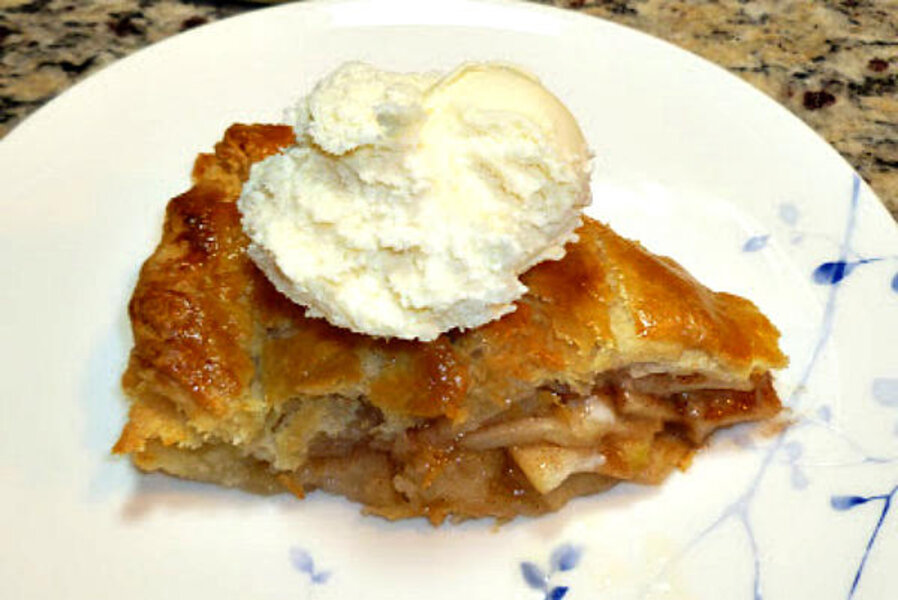By Carol Ramos, The Pastry Chef's Baking
Flaky Pastry Dough
2 cups unbleached all-purpose flour, about 10 ounces
1/4 cup cake flour, about 1 ounce
1/2 teaspoon salt
1/4 teaspoon baking powder
2 sticks unsalted butter, 8 ounces, cool
5 to 6 tablespoons ice water
1. Combine the all-purpose flour, cake flour, salt and baking powder; cut up and add the butter, and gently toss to coat.
2. Rub in the butter until the mixture looks sandy. Sprinkle over 3 tablespoons of ice water; toss with a fork. Add another tablespoon of water if necessary. Press the dough together. Wrap and chill.
Apple Pie
5-7 tart apples (I used Granny Smith)
3/4 - 1 cup sugar (I used 3/4 cup)
2 tablespoons flour
Dash of salt
1 teaspoon cinnamon
1/4 teaspoon nutmeg
1 recipe plain pastry (I used the pie crust recipe above but you can substitute your own)
2 tablespoons butter
1. Prepare apples and slice thin. Mix sugar, flour, spices – add to apples.
2. Fill 9-inch pastry-lined pan. Adjust top crust. Crimp edges and cut slits in top crust to let steam escape. Dot with butter (note: it's a little unclear whether she means to dot the butter on top of the crust or underneath it. I went with underneath the top crust and egg washed the top crust itself before putting it in the oven). Place pie pan on a cookie sheet to catch any drips.
3. Bake in hot oven (400 degrees F.) for 50 minutes. If crust is browning too quickly, lower temperature to 375 degrees F. If apples are not tart, add 1 tablespoon lemon juice or grated lemon peel, if desired.
Read the full post on Stir It Up!








